Here's what we know so far about the Apple iPhone 8
Apple iPhone 8 rumor round-up
This year could be Apple's most significant refresh of the iPhone since 2014 for two reasons. One, 2017 marks the 10th anniversary of the iPhone and Apple is widely expected to celebrate it with a major product launch. Two, the iPhone design has not changed for three years, which led to speculation that we would be seeing a major design overhaul this time. There has been a flood of leaks and rumors for many months now, and as September approaches, now's the perfect time to round them up.
1.) How many new iPhone models?
Since 2015, Apple has been releasing two iPhone models during its annual September launch events. It broke tradition last year when the 4-inch iPhone SE was announced in March. Would we be seeing three new iPhone models this year? Could there be a fourth premium model to celebrate the 10th anniversary of the iPhone? Let's break it down.
Nikkei Asian Review was one of the first publications to speculate on the possibility of three iPhone models this year. Its source claimed that there would be three new models consisting of the three screen sizes (4.7, 5.0, and 5.5-inches). A Nov report by KGI Securities analyst Ming-Chi Kuo made a similar claim though he believed there would be two 5.5-inches models and one 4.7-inch model.
Market intelligence firm TrendForce also agrees; there would be three iPhone models this year with only one top-end model using a new display panel. In May this year, purported molds of the three iPhone models surfaced on the Chinese social networking site Weibo. Perhaps the most reliable report comes from Bloomberg's Mark Gurman, who has a solid track record on Apple's upcoming products. He states that Apple is preparing three iPhones for launch, including upgraded versions of the existing two iPhone models and a new top-end model with a new look.
However, we cannot discount the other rumor of an iPhone SE refresh. After all, Apple claimed that there was sufficient demand for it to launch the iPhone SE last year and it has been more than a year since its debut.
2.) The switch to OLED
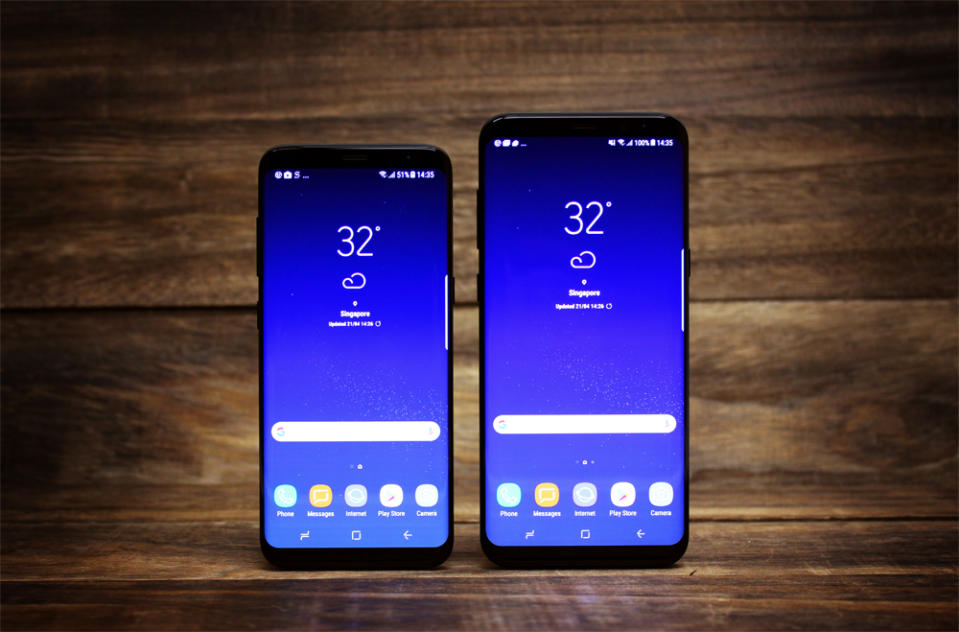
Apple has been using LCD display panels for the iPhone since the beginning. However, OLED offers several benefits such as thinner displays and better power efficiency. Not to mention inky black levels due to the lack of a backlight unit. Will Apple use the 10th anniversary of the iPhone to make the shift to OLED? Well, all signs point to yes.
In fact, rumors of the OLED switch have been circulating for more than two years. Business Korea reported in June 2015 that major Korean display manufacturers were pitching to Apple to adopt flexible OLED for the iPhone since Apple wanted to improve the color saturation, accuracy, and brightness of the display on the iPhone. In October 2015, ETNews claimed that Samsung was providing OLED samples to Apple for testing. The following month, The Korea Times said that Samsung Display was in talks with Apple to supply OLED panels for the iPhone.
In April 2016, Samsung reportedly signed a US$2.59 billion deal with Apple to supply 100 million units of 5.5-inch OLED panels annually. Due to its position as the world's biggest OLED supplier, Samsung is also said to be the exclusive supplier for two years. It has reportedly signed multiple deals including a US$4.3 billion agreement to supply another 60 million OLED panels and a massive deal for another 70 million panels.
However, Apple is known to diversify its supplier base. In December 2015, it was finalizing a deal with LG to supply OLED panels. It is not known if the deal was eventually signed, but LG recently committed to investing over $13.5 billion in the next three years to beef up its OLED production facilities.
Bloomberg's report in May 2016 stated that several display suppliers such as Applied Materials were gearing up for huge orders from Apple. The iPhone maker was also said to be in discussions with Chinese suppliers for flexible OLED displays. Apple itself has been rumored to be developing its own OLED technology to reduce its reliance on Samsung; it has also purchased CVD machines and setup a R&D facility in Taiwan to invest in OLED technology.
In March 2016, KGI Securities analyst Ming-Chi Kuo was among the first to mention that Apple would be unveiling a new iPhone model with a 5.8-inch OLED panel, a claim he consistently reiterated in the April and November investor notes. The iPhone model with OLED display is said to be called the iPhone Edition.
The Wall Street Journal jumped onto the OLED rumor bandwagon too by stating that Apple was testing more than 10 different iPhone prototypes, one of which includes an OLED curved display. The Korea Herald claimed that Apple would use a plastic OLED curved panel for one of the three iPhone models. However, do not expect the display of the iPhone 8 to be as curved as that of the Galaxy S8. Nikkei Asian Review learnt from its source that the curves of the display on the iPhone 8 will be gentler than that of the Galaxy S7 edge.
So yeah, get ready for an OLED iPhone.
3.) Rear glass design and metal frame with edge-to-edge display

Rear glass design
The iPhone design has not changed for three years and frankly, it's getting a tad outdated when compared with near bezel-less and edge-to-edge designs of recent Samsung Galaxy phones. So what can we expect from the new iPhones this year in terms of design?
KGI Securities analyst Ming-Chi Kuo reported in April 2016 that Apple planned to use new materials to differentiate the iPhone from the competition. He wrote that Apple is ditching the aluminum chassis for an "all-glass" enclosure, a sentiment later echoed by Nikkei Asian Review which also claimed that the three iPhone models will have glass backs made by Chinese companies Biel and Lens.
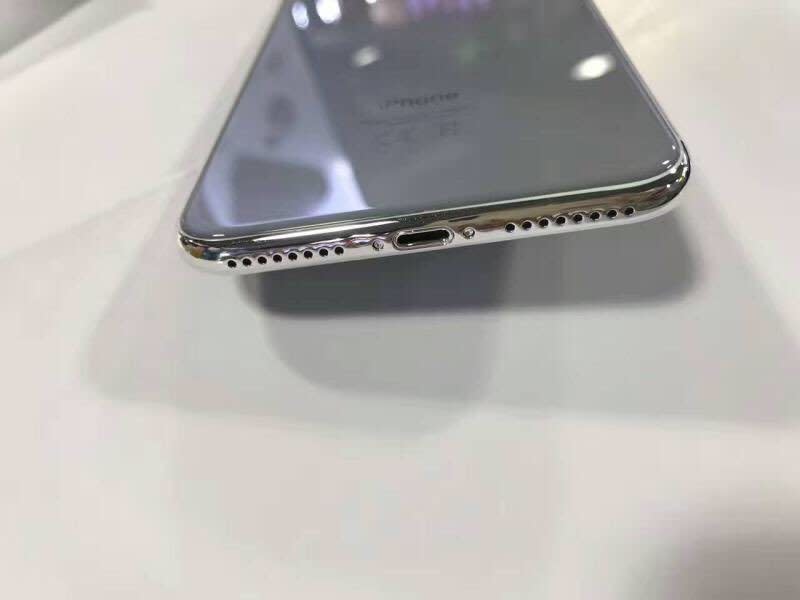
In May this year, BGR obtained exclusive photos of the final design of the iPhone 8 that revealed 2.5D glass panels on the back. Days later, a dummy unit of the iPhone 8 was shown off in an hands-on video that showed a glass back as well.
Reliable leakster Sonny Dickson also provided 9to5Mac with photos of a purported iPhone 7S Plus dummy unit to confirm earlier rumors of the glass back design. He later shared more photos showing the dummy units of the iPhone 7S, 7S Plus, and 8 side by side.
Metal frame with edge-to-edge display
To fit a bigger display, phone makers either have to increase the footprint of the device or reduce the bezels. The latter option is better as it does not make the phone too unwieldy. Samsung implemented it quite effectively with the Galaxy S8 and S8+. Since there were rumors of Apple releasing a bigger display on the iPhone 8, which path would Apple take?
Kuo mentioned in March 2016 that Apple will introduce the iPhone 8 with slimmer bezels so as to fit a 5.8-inch display in a form factor that is smaller than the 5.5-inch iPhone. He also mentioned that Apple will use metallic frames to reinforce the rear glass casing; the iPhone 8 will use stainless steel while the iPhone 7S/7S Plus will use aluminum. Barclays Research analysts shared similar claims that the iPhone 8 will have a border-less, bezel-free design. Numerous reports also mentioned that the iPhone 8 would come with a 5.8-inch display. How would a 5.8-inch edge-to-edge display look like on an iPhone?
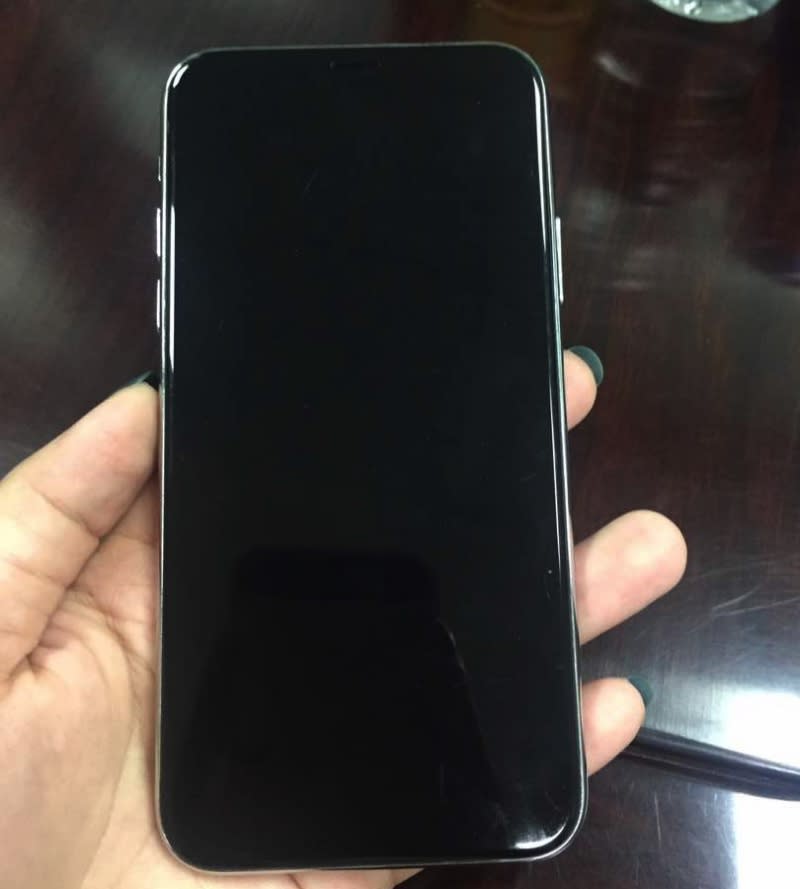
One of the first plausible concept images of the iPhone 8 came from iDROPNEWS that showed an almost edge-to-edge display and a metal frame. In May 2017, BGR claimed to have obtained the first exclusive photos showing the iPhone 8 dummy unit. The dummy unit is said to be based on actual finalized schematics leaked from factories that are manufacturing the phones. BGR made several observations such as a polished stainless steel frame and slight curves of the 2.5D glass panels.
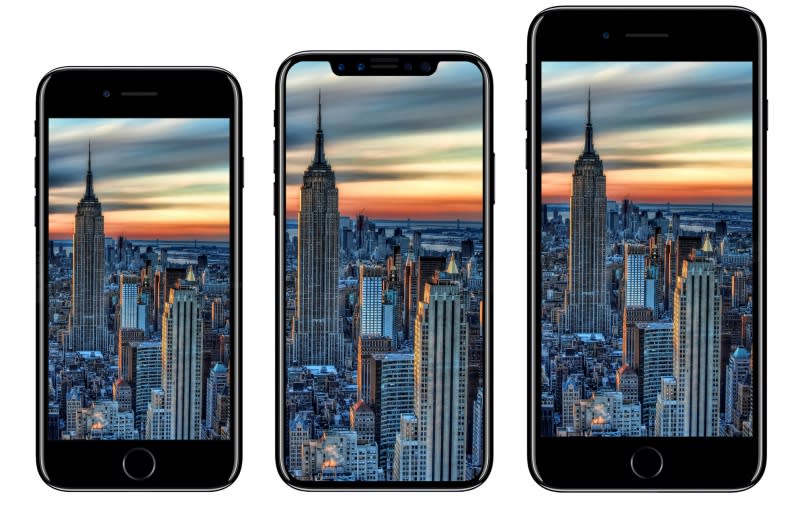
iDROPNEWS later came up with renders comparing the iPhone 8, iPhone 7, iPhone 7 Plus, Galaxy S8 and Galaxy S8+. Among the iPhone family, the iPhone 8 is only slightly taller, wider, and thicker than the 4.7-inch model, and maintains a smaller footprint than the 5.5-inch model. When compared to the Galaxy S8 models, the iPhone 8 is thinner and shorter, but wider. Kuo's recent report claims that the iPhone 8 would have the highest screen-to-body ratio of any phone in the industry due to the use of a virtual home button and the addition of a "notch" at the top of the display.
Regarding colors, Apple is said to be introducing three special color options for the iPhone 8, one of which is a totally different shade of gold. While some reports claim that the new color option is copper gold, tipster Benjamin Geskin (@VenyaGeSkin1) states otherwise. According to his source at Foxconn, the internal name of the iPhone 8 is called "blush gold".
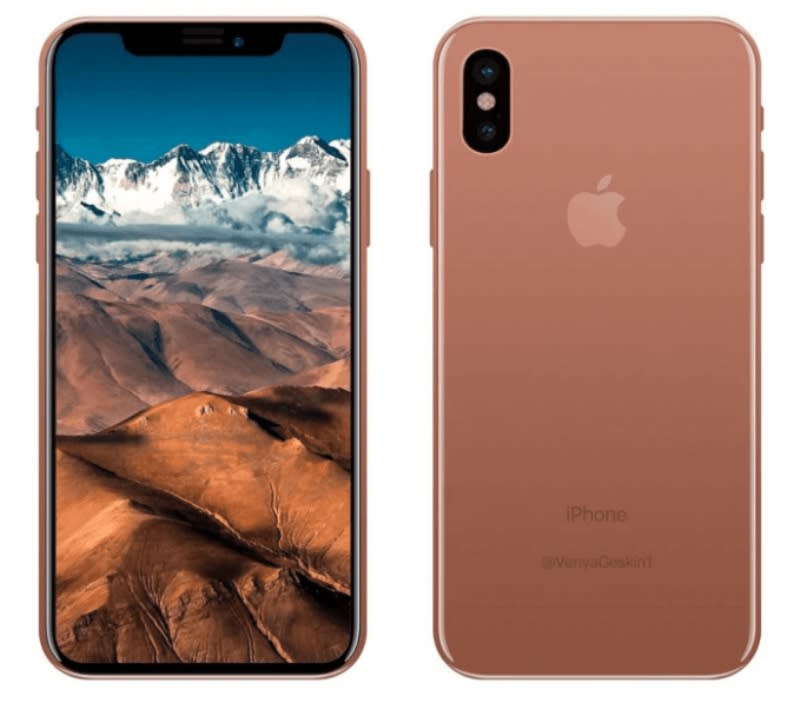
4.) What will happen to the physical Touch ID button?

The physical Touch ID button has been a signature feature of the iPhone since 2007. Due to the placement of the Touch ID button, Apple has to allocate significant space below the display (aka the "chin"). In view of a new design and edge-to-edge display, the physical Touch ID has to go. How would Apple go about doing this?
In June 2015, there was chatter in the Taiwan's IC design industry that Apple was working on touch and display driver integration (TDDI) single-chip solutions for the iPhone where fingerprint sensors are integrated with a virtual home button for an "ultra-thin, ultra-narrow display". Bloomberg reported in 2016 that the home button would be eliminated as part of a major redesign.
KGI Securities analyst Ming-Chi Kuo reported in February this year that the iPhone 8 could have a "function area" at the bottom of the display, which is located at the same section as the current Touch ID button. iDROPNEWS shared in April that Apple was testing two prototypes of the iPhone 8 with one having the Touch ID embedded in the display and the other having Touch ID on the back.
The rumor of a rear Touch ID button is thrown into doubt after tipster @OnLeaks shared a purported iPhone 8 schematic as there is no cutout for a rear Touch ID button. Coincidentally, Patently Apple stumbled upon Apple's patents for an embedded Touch ID sensor in the display. The Chinese publication Economic Daily News (EDN) also claimed that the iPhone 8 would have an optical fingerprint sensor. Following up on his Feb report, Kuo wrote that the iPhone 8 will not come with Touch ID fingerprint sensor of any kind. This means that there will be no on-screen fingerprint sensor or a rear fingerprint sensor.
So what will happen to the Touch ID button? Has Apple come up with something better and more advanced?
5.) 3D front-facing camera
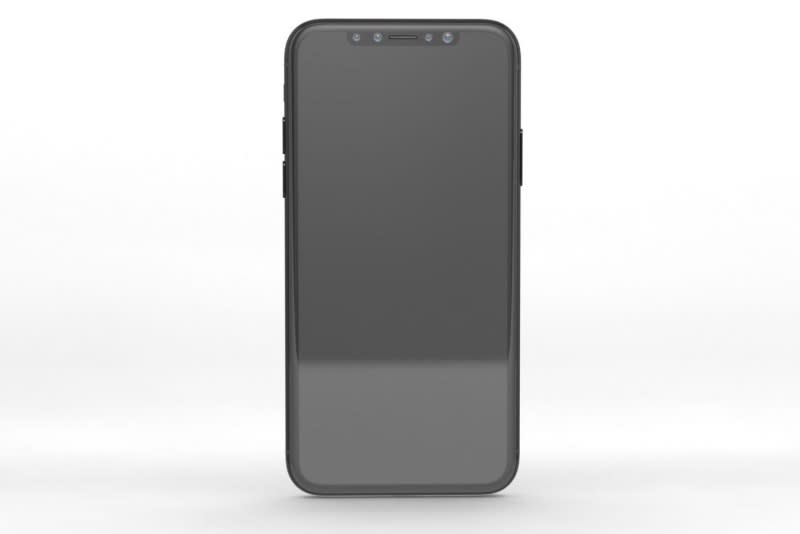
The previous section discussed the likelihood of the physical Touch ID disappearing on the iPhone 8. What would Apple replace it with? Most rumors have suggested that Apple is using some sort of facial recognition or iris scanning technology to replace the fingerprint sensor. How true are these reports? Let's take a look at the rumor mill and facts.
In 2013, Apple acquired 3D sensor comany PrimeSense for a whopping US$360 million. PrimeSense specializes in 3D sensing technology that gives digital devices the ability to observe a scene in three dimensions. The firm also has the Capri sensor, which is dubbed "the smallest and most robust 3D sensor available". The Capri sensor can be embedded directly into smartphones and tablets, giving these devices features such as augmented reality gaming, virtual shopping, 3D scanning, and photography enhancement.
In November 2016, the Korean Economic Daily claimed that Apple was working with LG on a 3D camera for the iPhone 8. The iPhone maker reportedly wanted to integrate its 3D technology (supposedly obtained from the acquisition of PrimeSense) into LG Innotek's 3D camera module. However, a separate report by Fast Company in February 2017 stated otherwise; Apple is said to be working with Lumentum on 3D-sensing technology for the iPhone 8, which can be used to recognize the user's face for authentication. In the same month, it was revealed that Apple acquired Israeli startup RealFace for its "frictionless face recognition" technology.
By now, it seemed as though Apple was indeed working on some advanced facial recognition technology with its front-facing camera. KGI Securities analyst Ming-Chi Kuo was the first to call the front camera "revolutionary" and elaborated on its functions. Kuo mentioned that there will be an infrared module, a 3D sensor, and advanced algorithms for combining depth information with 2D images for applications such as face recognition and iris recognition.
In May 2017, the Korean Economic Daily reported that LG Innotek is the sole supplier of the facial recognition camera modules for the iPhone 8. The facial recognition technology is reportedly more advanced than that of the Galaxy S8. The iPhone camera lens supplier Largan Precision is also said to be shipping 3D-sensing lenses for the iPhone 8.
How much more advanced is Apple's front-facing camera compared to the Galaxy S8? Well, Bloomberg wrote that the 3D face scanning technology by Apple is faster and more accurate. Scanning of the face and unlocking of the phone take place within a few hundred milliseconds and does not require the phone to be held in front of the face to work. 3D face scanning is touted as more secure as it can read more data points than a fingerprint sensor.
Apple's HomePod firmware appears to have corroborated these claims so far. iOS developer Steve Troughton-Smith found codes suggesting the existence of an infrared face unlocking feature on the iPhone 8, no evidence of an on-screen fingerprint sensor, and the presence and functionality of a virtual home button. However, this feature might not be available at launch as Apple is rumored to be having a lot of issues getting the sensor to work reliably.
What about the iPhone 7S and 7S Plus, the two phones rumored to retain an LCD screen? It's anyone's guess, but we think these two will continue to have a Touch ID button.
6.) Vertical lens layout on the back

Why the change?
Apple introduced the dual-camera module on the iPhone 7 Plus last year and KGI Securities analyst Ming-Chi Kuo believes it will remain exclusive to the 5.5-inch models this year. Having said that, MacOtakara reported in December 2016 that the iPhone 8 will have a vertical dual-lens camera layout, which is different from the horizontal configuration introduced on the iPhone 7 Plus. Will a change in orientation help in imaging performance? Bloomberg seems to think so. Sources told Bloomberg that the dual-camera system is positioned vertically for better image quality.
How would it look like?
Leaked schematic of the iPhone 8 revealed by @OnLeaks showed how Apple is positioning the dual-camera module on the phone vertically with an LED flash in the middle. This is later corroborated by the numerous renders and leaks of iPhone 8 dummy units. Accessory makers are also producing cases to fit the vertical lens layout for the iPhone 8. This layout is also expected on the LCD-based 7S models.
New features
Fast Company said that the iPhone 8 would come with a rear-facing 3D laser system. It is said to offer better depth perception for AR apps and better autofocus. The 3D laser system can enhance depth measurement aspect significantly and make AR more lifelike. The 3D laser autofocus system is faster and more accurate than the phase detection autofocus system used in existing iPhones. The HomePod's firmware also suggests that the rear camera could support 4K video recording at 60fps, an upgrade over the existing 30fps on the current iPhone 7.
7.) Augmented Reality (AR) features
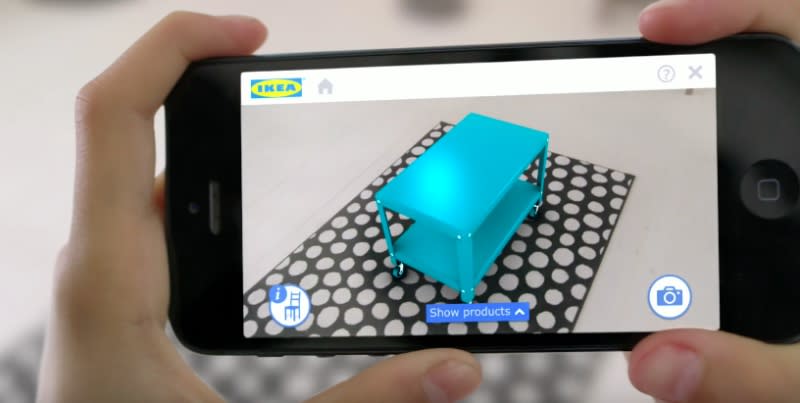
Apple's interest in AR began as early as 2013 when it acquired Israeli company PrimeSense for US$360 million. PrimeSense develops 3D sensing technology that can be used in digital devices to provide features such as augmented reality gaming, virtual shopping, 3D scanning, and photography enhancement.
In July 2016, Apple CEO Tim Cook publicly expressed his enthusiasm for AR and said that the company is "high on AR for the long run". Cook went on to say that "there are great things for customers and a great commercial opportunity". In November 2016, Bloomberg reported that Apple was considering to expand into digital glasses. The glasses are said to connect wirelessly to the iPhone, display images, and other information in the wearer's field of vision, and may use AR.
At CES 2017, American blogger and tech evangelist Robert Scoble noticed that there were no AR products in Zeiss' booth even though it was located in the middle of the AR space. He claimed to have asked a Zeiss employee who confirmed that Apple and Carl Zeiss are working on a pair of AR glasses. Fast Company claimed in February that Apple is working with Lumentum on 3D-sensing technology for the iPhone 8, which has potential for AR apps.
In March, UBS analyst Steven Milunovich claimed that Apple has over 1,000 engineers working on an AR project in Israel which could be featured in the iPhone 8. He also said that Apple is focusing its efforts on AR and not VR as the latter delivers "an isolating experience" where the user is cut off from the world by a headset. In the same month, Bloomberg said that Apple was assembling a multi-disciplinary team to develop AR products and integrate the features in its products.
Apple officially confirmed its interest in AR during WWDC 2017 when it announced ARKit. This will allow developers to make use of the iPhone’s cameras and various sensors to create AR content on the iPhone. Weeks later, IKEA confirmed in an interview that it is Apple's launch partner for AR, and both companies are working on an AR-based shopping app. Nike also announced that it has integrated AR features with the Nike+ SNKRS iOS app to mark the launch of the Nike SB Dunk High Pro “Momofuku" and make the purchase of exclusive sneakers more interactive for its customers.
8.) Wireless charging

Wireless charging emerged as a trend in smartphones more than five years ago with the Lumia 920 and Nexus 4. However, Apple had not equippied its iPhones with this feature. Will Apple bring wireless charging to the iPhones this year?
Apple appeared to have been working hard behind the scenes on wireless charging. It filed a patent application for wireless charging in November 2010, which describes its magnetic resonance charging technology as being able to charge a device over the air at a distance of up to a meter.
Its wireless charging development picked up pace last year when it reportedly hired two engineers with expertise in wireless charging from uBeam. uBeam specializes in wireless charging, specifically a technique that uses ultrasonic waves to charge devices.
Regulatory fillings discovered by VentureBeat in September 2016 revealed that Apple could be working with wireless charging firm Energous. Certification testing documents explicitly mentioned Energous' WattUp reference design undergoing compliance testing at Apple. Three months later, Apple supplier Dialog invested $10 million in Energous, and in return, the wireless charging firm transferred its entire silicon operations to Dialog. At about the same time, rumors surfaced on Foxconn testing wireless charging modules for use in the iPhone. There were also reports that Apple has been working with Broadcom for two years on a customized wireless charging system.
KGI Securities analyst Ming-Chi Kuo wrote in November 2016 that the new iPhones can be charged wirelessly on an inductive pad similar to the way the Apple Watch is charged. Kuo also mentioned that the use of a glass back casing will offer faster wireless charging speeds as there is minimal disruption from frequency interference. He also speculated that the wireless charger might be sold as an optional accessory or only be bundled with the iPhone 8.
This is later confirmed by renowned Apple blogger John Gruber who heard that the accessory will be sold separately and the wireless charging feature might not be enabled at launch. Fast Company's source also corroborated this claim.
Wireless charging is likely to debut on the new iPhones as a leaked schematic of the iPhone 8 reveals a large circular area in the center. In addition, iPhone assembler firm Wistron confirmed that wireless charging will come to the iPhone this year.
9.) Switch from Lightning to USB Type- C port?

The Wall Street Journal (WSJ) created a stir in March when it reported that Apple could replace the Lightning port on the new iPhone models with USB Type-C. Days later, KGI Securities analyst Ming-Chi Kuo stepped in to debunk WSJ's report. He expects all three iPhone models to retain the Lightning port despite the fact that USB Type-C offers fast data transfer. He also cited the following factors which will prevent Apple from switching to USB Type-C:
Apple continues to earn MiFi royalties from the third-party accessory ecosystem.
Space constraints on the new iPhone meant that there would be no space for a bigger USB Type-C port.
Cowen and Company analyst Timothy Arcuri echoed similar sentiment and said that Apple will continue to use Lightning ports for the new iPhone models. The three iPhone models will also support fast charging, presumably using USB Power Delivery. USB PD is already used on the iPad Pros, so this shouldn't surprise anyone.
10.) Ongoing dispute with Qualcomm may aid Intel

Patent disputes are messy yet Apple often finds itself involved in them. One of the biggest patent disputes this year is between Apple and Qualcomm. It apparently started in January 2017 after the U.S Federal Trade Commission (FTC) sued Qualcomm for anti-competitive policies in the realm of mobile phone processors.
Days later, Apple sued Qualcomm for nearly US$1 billion over royalty fees, claiming that the chip maker has unfairly insisted on charging royalties for technologies it (Apple) has nothing to do with. Despite the lawsuit, Qualcomm claimed that it will not stop shipping chips to Apple. The legal fight intensifed after Apple filed two lawsuits against Qualcomm in China and one in the U.K.
This prompted Qualcomm to countersue Apple, claiming that the iPhone maker failed to engage in good faith negotiations for a license to its 3G and 4G standard essential patents on fair, reasonable, and non-discriminatory terms. The chip maker followed up with a request to the International Trade Commission (ITC) to implement an import ban of the iPhones built in China that also includes the next iPhone models.
Apple counterattacked in the U.S federal court by saying Qualcomm's chip licenses are invalid. Qualcomm then officially filed a patent infringement complaint with the ITC and Federal Court to ban the iPhone in the U.S. The Computer & Communications Industry - consisting of major tech companies such as Amazon, Google, Intel, and Samsung - filed their comments with the ITC to reject Qualcomm's request to ban the iPhone, and said the ban could cause "significant shocks to supply" for phones and would hurt consumers. Qualcomm responded by saying that the ban would not have any long term effect on smartphone prices as Apple is free to purchase and use any radio modems that do not infringe on its patented technologies.
While the dispute continues, it is likely that Apple will source for radio modems from Intel and the latter's XMM 7560 modem is a likely candidate. The XMM 7560 modem supports LTE Advanced Pro with Cat 16 download speeds exceeding 1Gbps, and Cat 13 upload speeds of up to 225Mbps. However, a Bloomberg report states that the 2017 iPhones - like the 2016 iPhone 7 and 7 Plus - will be using a mix of Intel and Qualcomm modems. However, Intel is still working on a modem capable of 1 gigabit download speeds and might not be ready for the launch of the iPhone in September. As a result, the new iPhone models might not support gigabit download speeds unlike some of the Android flagship phones.
11.) Other specs
A11 processor, RAM & storage options

The next generation iPhone is expected to be powered by the A11 processor since the iPhone 7 and 7 Plus are equipped with the A10 processor. Taiwan Semiconductor Manufacturing Company (TSMC) reportedly started production of the A11 chips in April and is expected to produce up to 100 million pieces by the end of the year. On a side note, TSMC also manufactures the A10X chips found in the iPad Pro 10.5 and iPad Pro 12.9 (second-gen). The A11 chipset is said to be more power efficient, allowing Apple to maximize battery mileage while adding more advanced features to the new iPhones.
As for RAM and storage options, TrendForce claims that the 4.7-inch and 5.5-inch iPhones will remain similar as the current iPhone 7 lineup. This means we're looking at storage options of 32GB, 128GB and 256GB, and 2GB RAM for the 4.7-inch model and 3GB RAM for the 5.5-inch model. The iPhone 8 is expected to have 3GB RAM and is available in 64GB and 256GB storage options. Cowen and Company analyst Timothy Arcuri shared similar predictions.
In sum:
iPhone 7S: A11 chipset, 2GB RAM, 32/128/256GB storage options
iPhone 7S Plus: A11 chipset, 3GB RAM, 32/128/256GB storage options
iPhone 8: A11 chipset, 3GB RAM, 64/256GB storage options
3D Touch
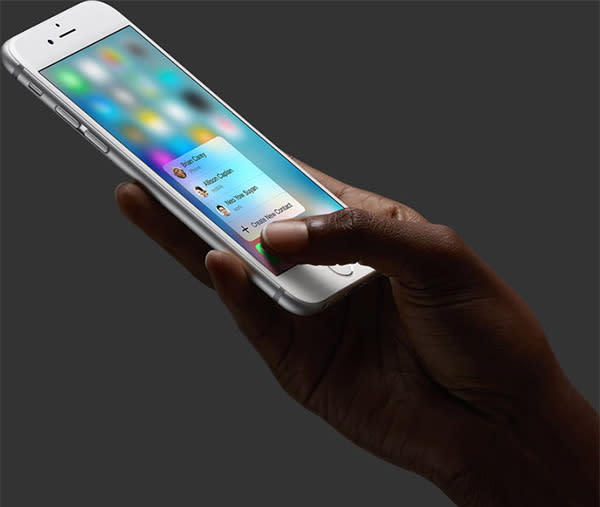
3D Touch was introduced on the iPhone 6S. It allows users to press deeply on certain apps to launch actions, reply to notifications, and preview messages and links. This year, Apple is rumored to be introducing new 3D Touch technology on the iPhone.
KGI Securities analyst Ming-Chi Kuo expects Apple to use a thin film-based component package for the new 3D Touch module, which will bring enhanced sensitivity and a better overall experience, with the potential for more complex gestures than home screen quick actions and system wide “peek and pop” previews.
Waterproofing
The iPhone 7 and 7 Plus are currently rated IP67 for water and dust resistance. The Investor claims that Apple will upgrade the water and dust resistance on the new iPhones to IP68 as part of a major revamp marking the 10th anniversary of the iPhone. iPhone assembler firm Wistron also confirmed that the iPhones will have "new features like waterproof."
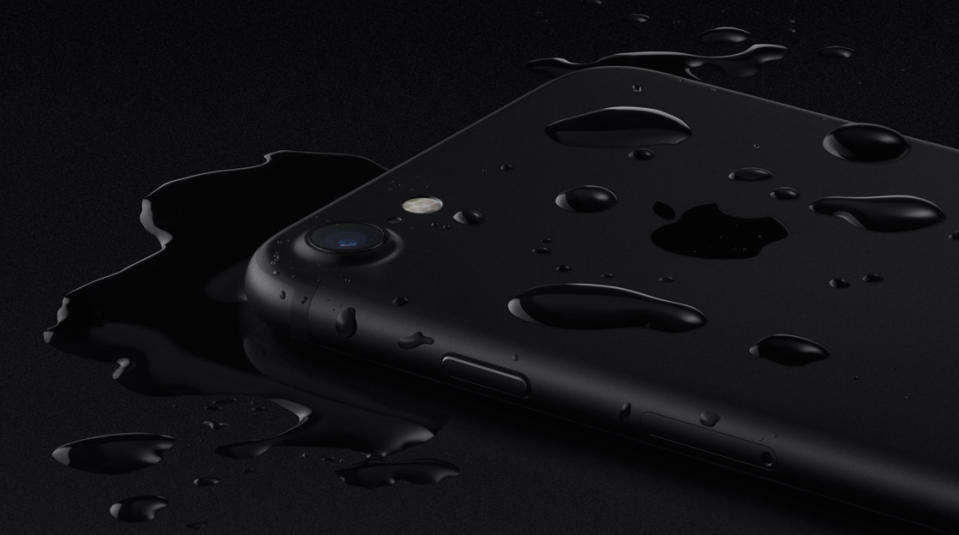
12.) Availability and Price
Availability

For the past three years, Apple has released new iPhones in September. Therefore, it is expected that this year will be the same, but there are multiple reports suggesting otherwise.
Japanese blog Macotakara reported in March 2017 that Apple might need more time for testing and sourcing materials to make the final decision on the hardware. Hence, it believes the iPhone 8 might not be available for purchase at the same time as the iPhone 7S and 7S Plus.
In April, the Economic Daily News claimed that "technical issues related to the lamination process of curved OLED panels, and the adoption of a 3D sensing system may cause the delay of the new iPhone devices". As a result, Apple may delay the launch of the iPhones to October or November. KGI Securities analyst Ming-Chi Kuo shared similar belief; he said that there are production issues and supply bottlenecks of several advanced components in the iPhone 8. Nikkei Asian Review also reported that the availability of the iPhone 8 could be pushed back as Samsung had difficulties delivering what Apple wanted, and that Apple encountered other obstacles such as overheating issues in the wireless charging modules.
The Economic Daily News claimed in May that Apple would announce the new iPhones in September and sell them only in October. The publication also said that component makers were ready to ramp up production in June. However, 9to5Mac downplayed the optimism and said that Apple is still facing a number of software issues and this might force Apple to delay the launch of the iPhone 8 or disable key features at launch. iGeneration heard from its source that there will be a new iPhone SE this month and the iPhone 8 will launch in October.
Tipster @OnLeaks tweeted earlier this month that the mass production of the iPhone 8 has started and is on track for a September launch. KGI Securities revised its earlier report and said that the iPhone 8 would launch alongside the iPhone 7S and 7S Plus, but stocks of the iPhone 8 would be severely constrained at just 2 to 4 million units at launch.
While the iPhone 7S and 7S Plus are expected to retain the same color options (jet black, black, silver, gold, rose gold), the iPhone 8 could be available in three exclusive colors (copper, jet black, pearl). Kuo mentioned that the color exclusivity will help differentiate the iPhone 8 from the rest of the iPhone family.
Pricing
The iPhone 8 is rumored to come with a premium price tag of US$1,000 (~S$1,421) according to a source of Fast Company. As a point of comparison, the iPhone 7 Plus (32GB) is currently priced from S$1,248. TrendForce also said the iPhone 8 is likely to cost at least US$1,000 due to the advanced features packed in the phone. Goldman Sachs analyst Simona Jankowski wrote in May that the iPhone 8 would cost US$999 (128GB) and US$1,099 (256GB).
Regardless of who said what, there'll be a big hole in your wallet when the all-new, OLED-equipped iPhone 8 hits our retail shelves.


